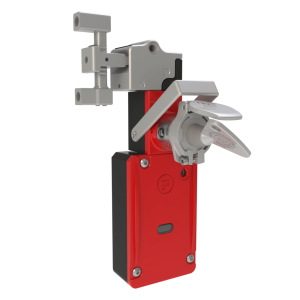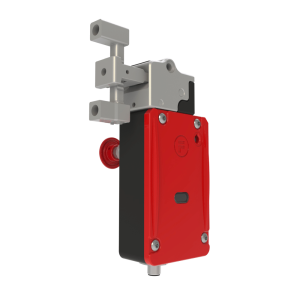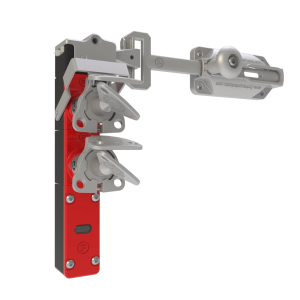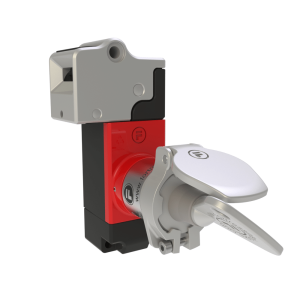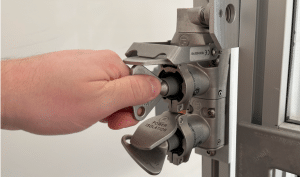Networked interlocks and control pods
Configurable interlocks and control pods for heavy-duty applications across all industries. Pushbutton controls and trapped key options can be combined into a single unit. Certified for use up to PLe/Cat. 4. Connectivity over EtherNet/IP, PROFINET and EtherCAT is enabled by the proNet communication module.
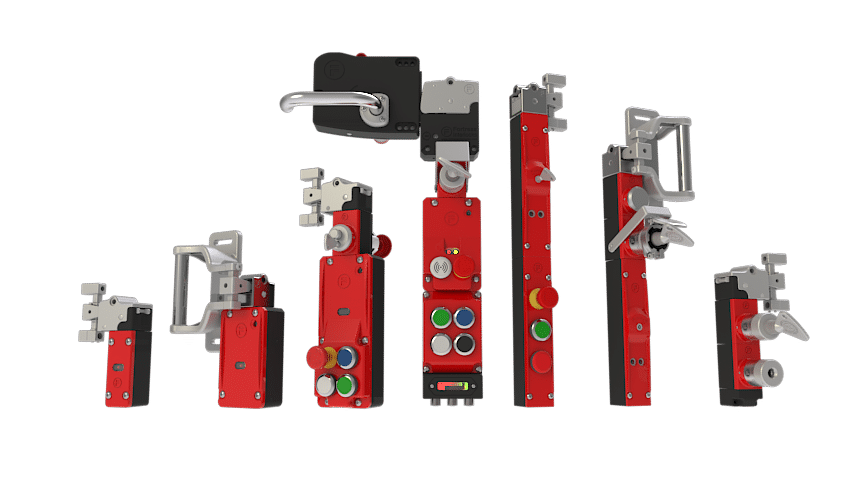

Benefits of amGardpro
Highly Configurable
Completely configurable, with a variety of features to choose from. Create tailored safety solutions to meet specific application requirements.
Reduce Replacements and Downtime
Made of metal alloy and stainless steel, amGardpro is extremely durable, reducing wear and tear, thus minimising the need for replacements and machine downtime.
All the Controls in One Place
Pushbuttons, lamps, emergency stops, and keys can be incorporated into a single device, providing an all-round and cost-effective solution.
Network Connectivity
The proNet communication module allows amGardpro to communicate with the major industrial network protocols: EtherNet/IP, PROFINET and EtherCAT.
Integration Made Easy
Several types of quick disconnects make the installation process quicker and more efficient. Optional mounting plates are also available.
Enhanced Safety
Designed for high reliability. Tested and third-party certified for use up to PLe/Cat. 4 or SIL 3.
Highly Configurable
Completely configurable, with a variety of features to choose from. Create tailored safety solutions to meet specific application requirements.
Reduce Replacements and Downtime
Made of metal alloy and stainless steel, amGardpro is extremely durable, reducing wear and tear, thus minimising the need for replacements and machine downtime.
All the Controls in One Place
Pushbuttons, lamps, emergency stops, and keys can be incorporated into a single device, providing an all-round and cost-effective solution.
Network Connectivity
The proNet communication module allows amGardpro to communicate with the major industrial network protocols: EtherNet/IP, PROFINET and EtherCAT.
Integration Made Easy
Several types of quick disconnects make the installation process quicker and more efficient. Optional mounting plates are also available.
Enhanced Safety
Designed for high reliability. Tested and third-party certified for use up to PLe/Cat. 4 or SIL 3.
amGardpro Features
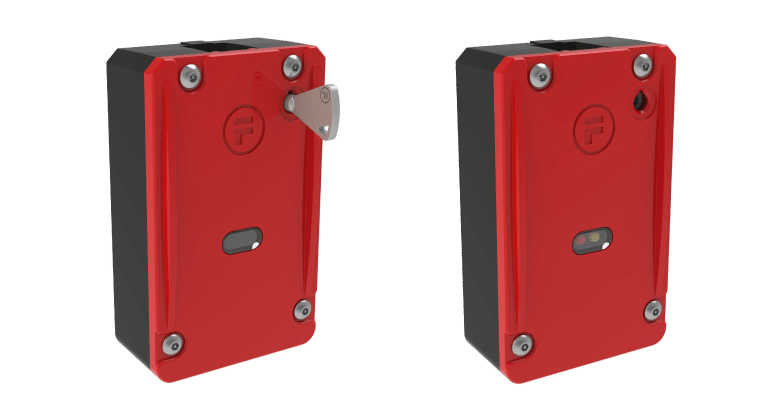
Monitored and Controlled Access
Interlock monitoring to detect guard opening. Interlocks can also include a solenoid controlled locking functionality for guard locking or locking for the protection of process.
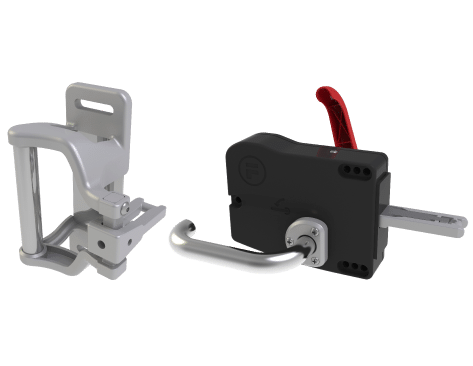
Heads and Actuators
A variety of actuators for hinged and sliding guards. Market leading misalignment capabilities to cope with guards’ movement and variability in machine guarding installation.
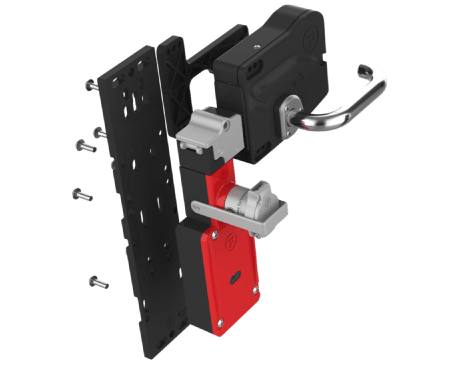
Mounting Plates and Connectors
Devices can be pre-fitted on mounting plates, reducing installation time and costs. Multiple connector configurations are available with the respective mating cables in different lengths.

Trapped Key Adaptors
Trapped keys can be used to control access or as proactive inhibit functions to protect personnel. RFID coded personnel keys are also available.

Option Pods
Available as a standalone product or as part of an amGardpro interlock, option pods allow the incorporation of pushbuttons, selector switches, lamps, and emergency stops.
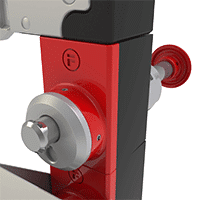
Escape Release
Escape release options to allow personnel to leave the safeguarded space should they become trapped. Single action, push reset, or key reset variants available.

Monitored and Controlled Access
Interlock monitoring to detect guard opening. Interlocks can also include a solenoid controlled locking functionality for guard locking or locking for the protection of process.

Heads and Actuators
A variety of actuators for hinged and sliding guards. Market leading misalignment capabilities to cope with guards’ movement and variability in machine guarding installation.

Mounting Plates and Connectors
Devices can be pre-fitted on mounting plates, reducing installation time and costs. Multiple connector configurations are available with the respective mating cables in different lengths.

Trapped Key Adaptors
Trapped keys can be used to control access or as proactive inhibit functions to protect personnel. RFID coded personnel keys are also available.

Option Pods
Available as a standalone product or as part of an amGardpro interlock, option pods allow the incorporation of pushbuttons, selector switches, lamps, and emergency stops.

Escape Release
Escape release options to allow personnel to leave the safeguarded space should they become trapped. Single action, push reset, or key reset variants available.

Network Connectivity with proNet
Enabling Communication with Industrial Network Protocols. A proNet option pod can be configured as part of an amGardpro interlock, but also as standalone control station and connected to external devices.
Installation and validation can be performed at reduced time and cost compared to hardwired connections.
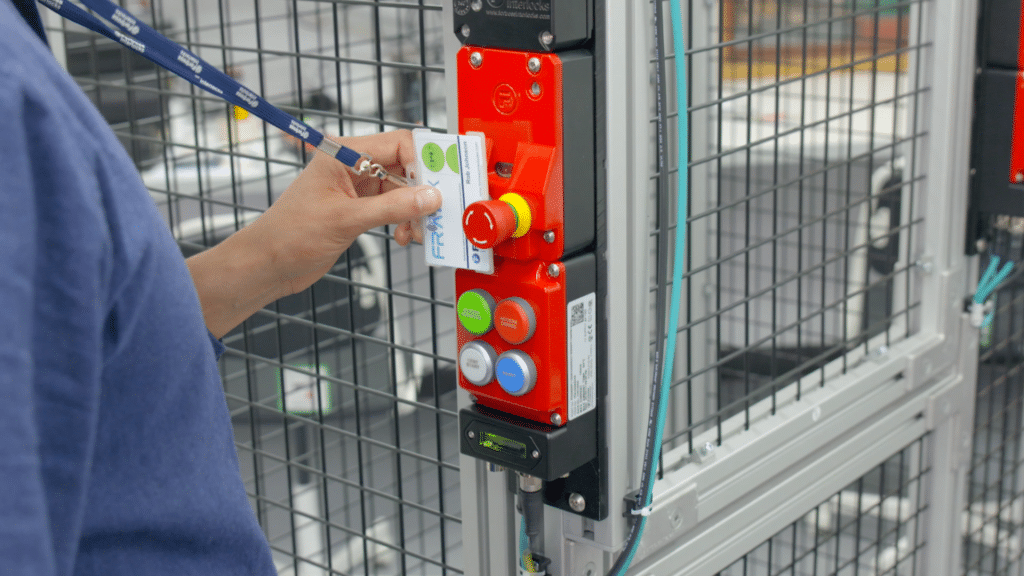
Managing Permissions over Industrial Networks
Fortress has developed Fortress RFID Access Network Keys (FRANK). Using the employees’ existing RFID cards, the FRANK system allows the assignment of employee permissions, which can then be used to enforce conditions for machine operation or access.
Designed to work with proNet devices, FRANK can be integrated into automation systems using network protocols to manage access control permissions.
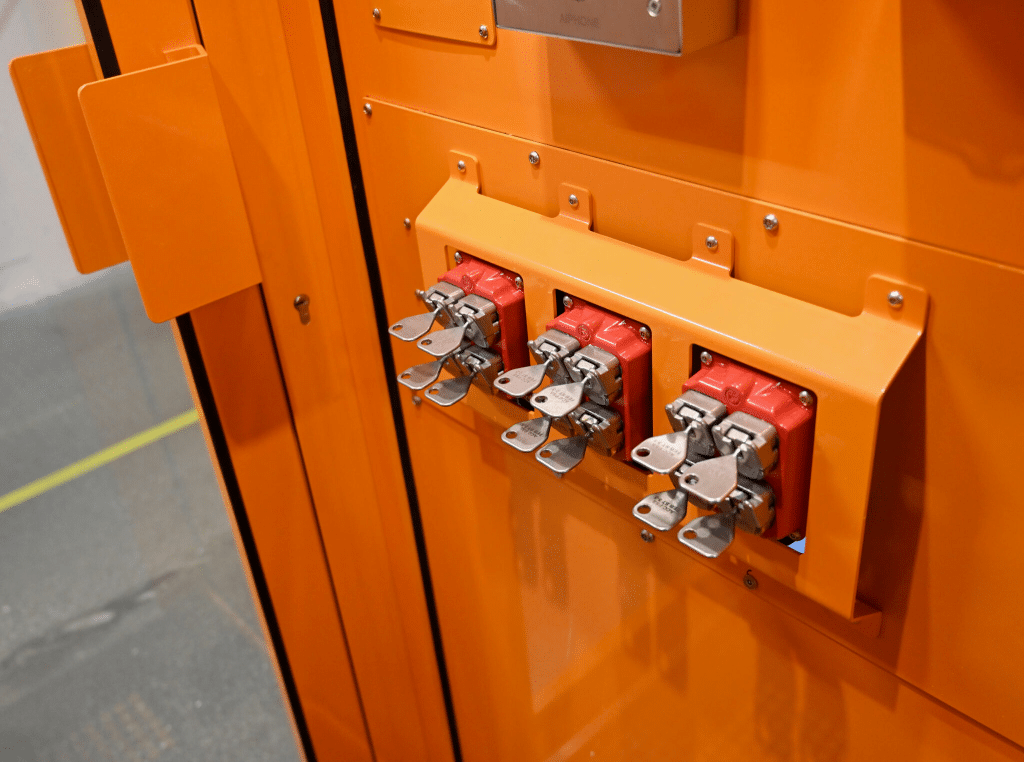
RFID Safety Keys (RSK)

Speak to an expert about your access, control and safety needs
Contact our expert sales team to discuss the best solution for your application needs, or use our custom configurator to build the right solution for you.
amGardpro Product Catalogue
amGardpro Videos
Playlist
Document Downloads
Brochures
Log in to access all documents
Access additional technical files related to this product range by signing up to MyFortress
Support Tools
news & Insights
- Event


Not sure where to start? We’re here to help
Our dedicated team of experts are here to help create the right solution for you. They can analyse your industry and specific application needs to offer recommendations on how Fortress products could benefit your setup.


